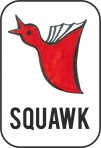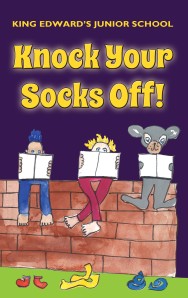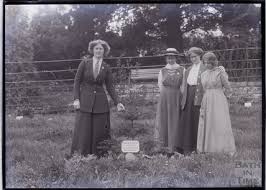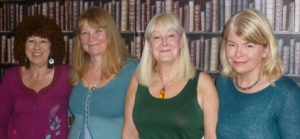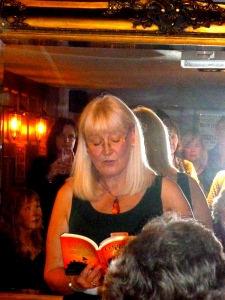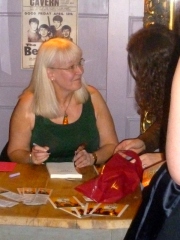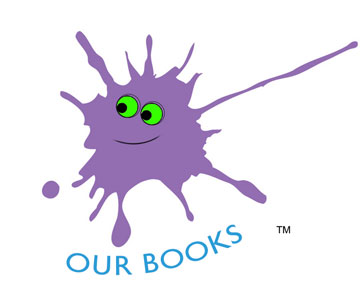First, make a plan. It’s okay to write your book without any kind of plan, if that’s your preferred way of working. But if you adopt that strategy for marketing, you’ll seriously restrict your book’s chances.
A lot depends on how much time you have. I don’t subscribe to the ‘make the time’ school of thought, either for writing, reading or marketing. Too many writers also work, full time or part time, and many don’t even get sitting down to eat until way after 7 pm. Since the laws of physics are immutable, ‘making time’ is impossible, so don’t beat yourself up about it. What it really means is that if you want to write and market your books, and you also have to work, then some other part of your life will have to be sacrificed: eating, sleeping, watching tv, spending time with loved ones … take your pick.
All this means is that choosing a marketing strategy that works best for you is more important than trying to fit everything in and then wondering why you’re exhausted, bad tempered and have just noticed a horrible mistake on the last page of your printed book.
For example, you may not be able to do school visits (if writing for children) but you could fit in a few hours of social media marketing a week: reviewing others’ books, putting your own up for review, joining forums, being helpful, guiding people to your own blog (and your own book) … When your spare time is so precious, make every hour count. Don’t waste time on Facebook if you’re not comfortable with it – find another way. Forums can offer more anonymity, if that’s what you want. But bear in mind that these days, everyone wants to ‘see’ who you are.
A typical marketing plan might look something like:
1 Do a SWOT analysis: Strengths, Weaknesses, Opportunities and Threats.
Example: Strength: you write well. Weakness: you have limited time. Opportunity: independent publishing is becoming easier, and there are some very bad books out there. Threat: There are also a lot of very good, independently published books out there, and someone might write a book similar to yours but have greater resources with which to market it.
Your strengths and weaknesses will be unique to you, but the opportunities and threats will alter with the state of the market. Know where you stand within your chosen market. Keep an eye on it.
2 Sit down … I have some news … You are now a brand. I know. I’m so sorry, but it seemed best just to break it to you.
Even if you’ve never been image conscious or interested in fashions and fads, you need to start looking at yourself (the writer) as a product (a good book) that people (readers) want to buy. It’s your job to ensure those people know your product is available to buy and that they can be assured of a consistent image/style (and quality) within that product.
For example, if you write dark YA fantasy, your blog shouldn’t look and read like something from a knitting or gardening magazine (unless there’s an intelligent, psychotic plant that shape-shifts into … well, you know what I mean). This can be a hard idea to take in, because it encompasses so many things: your style of writing, your genre, how people (readers) see you, your image, your blog, your tweets … all of these should have your unique stamp on them.
3 Make a list of social media sites you might be interested in. As I mentioned in my Ten Tips for Successful Independent Publishing, join forums and review sites such as Goodreads or Booklikes. Start reviewing. Play nice! Ask others to review your book – but be prepared for them to be brutal. Stay professional. And build on the online relationships you make. Consider guest blogging (yours and theirs), give useful links. Be interesting. The idea is to drive traffic (people) to your blog or website, where they can find out more about you and possibly buy your book.
4 Your cover is an important marketing tools. Get it right. Organise a cover designer. Be prepared to pay for this – set a budget. Do homework. Check other book covers you like. Have a strong idea of what you want your cover to be, don’t expect the designer/illustrator to work to a blank canvas. Be prepared to pay a kill fee if you don’t like their attempts. Use your cover wherever you can in your marketing material – any press releases should have your picture and your cover on them. Your cover should definitely be on your blog and any Facebook page. Give your book, and cover, a page of their own, rather than just presenting it as a normal blog, which usually disappears down the list and makes way for the next blog.
5 Put your book into one of CreateSpace’s interior book templates to see how many pages it will make in the book size you want. Then work out what discount you will have to give to the major print on demand distributors (anything from 20% to 55%, depending on what you think you can get away with). They will all take a cut and the longer your book is, the more your print costs will be, giving you less profit. Once you know an approximate page size, you can work out roughly how much you will make on each sale. Then you can work out how many books you will have to sell to a) break even; b) make a profit; and c) earn a living from writing.
Caveat: this is the point where you may consider sticking your head in the gas oven, or running away to join a Circus in the Balkans so I think it’s worth pointing out that you need to accept you’re in this for the long haul and not the fast buck (excuse the mixed metaphor). Time and again I’ve heard it can take at least a year or two, or a book or three before you begin to make any decent money from writing.
6 Consider an online launch if you are launching an ebook only. It’s a good way of spreading the word to your online friends and associates that you have a book coming out. Read more about these at spiritauthors.com – a great site for all sorts of information on independent publishing.
7 Consider a bricks and mortar launch if your book is also print on demand. (Remember the book store will likely want to see the kind of book you plan to publish so let them see any book proof.) Don’t restrict yourself to independent book stores for your launch. There are some great Bars out there that would be happy to host a local author’s book launch, especially mid-week when it’s usually quieter. Or, again, consider something completely different. If your house is big enough, host the launch there, or at a friend’s. Theme it. Make it fun. Invite more people than you think will come; there will always be those who can’t make it.
8 Make up postcards with your cover on one side and your blurb and contact details on the other. Consider bookmarks (if appropriate), T-shirts, notebooks – anything you can think of that would add perceived value to your book. Always link these back to your book (cover or other visuals). Vistaprint.co.uk and other companies offer these kinds of products, often with discounts. But don’t spend money if you don’t have to. No point making up lots of T-shirts or fridge magnets just for the sake of it. Stick to items your intended readership might like, or find fun. Build this into your budget but don’t overdo it. Also, make sure you have a professional business card and carry it with you – for example when you visit your local book stores to ask if they’ll stock your book (see 10).
9 Consider an author Facebook page for your book and characters. Tweets and u-tube are other options (short readings, fun videos). But remember, as ever, to choose what works best for you and the time constraints you may be under. I’m making a list here so you have options; you don’t have to do it all.
10 Go round local book stores, especially the independents. Ask if they’ll consider stocking a few copies of your book. As an unknown, you don’t have a lot of leverage so if you’ve had any media coverage, take along a copy. Offer sale or return (times are hard for everyone). They’ll likely check the book’s ISBN to ensure they can order it from their usual wholesalers and if your print on demand company has done its job properly, your book should come up in all the right places. Ask for window space for a small display – they probably have their own plans for that but it’s worth asking. Sometimes they’ll offer you a window display ‘in a few months’. Fine. Keep in touch and take them up on it.
And here’s one extra tip – for those of you who actually want to write, rather than spend your creative time and energy on the social media marketing treadmill:
11 FIND ANOTHER WAY.
Read what Lionel Shriver says in her feature How to Succeed as an Author: Give up on Writing
Read some of what Michael Alvear says in his book How to Make a Killing on Kindle (Without Blogging, Facebook or Twitter) and then decide if you want to buy it.
As ever, it’s about balance. I hope you find it.
Good luck.
Kay
Originally posted on kaywritesheretoo.wordpress.com
Author of Treasure This
Co-founder of Electrik Inc
 Andy Weir, author of The Martian, first published this story on his own website one chapter at a time. He’d been posting short stories and chapters of different books on-line for ten years, growing a dedicated following. His readers asked him to produce an ebook version of The Martian to make it easier to read, and this is when the book took off. Suddenly, he had an agent, a book deal and Fox Studios making the movie. Interestingly, the author had once taken three years off work to try and sell his writing to a traditional publisher and failed.
Andy Weir, author of The Martian, first published this story on his own website one chapter at a time. He’d been posting short stories and chapters of different books on-line for ten years, growing a dedicated following. His readers asked him to produce an ebook version of The Martian to make it easier to read, and this is when the book took off. Suddenly, he had an agent, a book deal and Fox Studios making the movie. Interestingly, the author had once taken three years off work to try and sell his writing to a traditional publisher and failed. Wattpad has 8 million monthly visitors and a high proportion of YA users. Writers post their books chapter by chapter, and give it away for free. But some authors see it as a price worth paying in order to find a readership. Lily Carmine’s story, The Lost Boys, clocked up 33 million readers! It was quickly snapped up by Random House.
Wattpad has 8 million monthly visitors and a high proportion of YA users. Writers post their books chapter by chapter, and give it away for free. But some authors see it as a price worth paying in order to find a readership. Lily Carmine’s story, The Lost Boys, clocked up 33 million readers! It was quickly snapped up by Random House. Amazon’s Kindle Direct Publishing (KDP) enables authors to independently publish their books straight to Kindle. It’s not a passport to getting your work noticed, but if your writing stays in a drawer no-one is going to read it! Producing an ebook is less expensive than making a physical book and is a good way of dipping your toe into the water to see if it sells. Tom Watson, author of the picture book Stick Dog, produced his own ebook because he felt his work was “too far out there” for a traditional publisher. It went on to gain a massive following through word of mouth. Our Electrik Inc books are all available as ebooks.
Amazon’s Kindle Direct Publishing (KDP) enables authors to independently publish their books straight to Kindle. It’s not a passport to getting your work noticed, but if your writing stays in a drawer no-one is going to read it! Producing an ebook is less expensive than making a physical book and is a good way of dipping your toe into the water to see if it sells. Tom Watson, author of the picture book Stick Dog, produced his own ebook because he felt his work was “too far out there” for a traditional publisher. It went on to gain a massive following through word of mouth. Our Electrik Inc books are all available as ebooks.


 salt water and sweet honey, rough wood and silky-soft cat fur. She pictured the owl’s talons plucking the guitar strings and the sound the instrument made.
salt water and sweet honey, rough wood and silky-soft cat fur. She pictured the owl’s talons plucking the guitar strings and the sound the instrument made.
